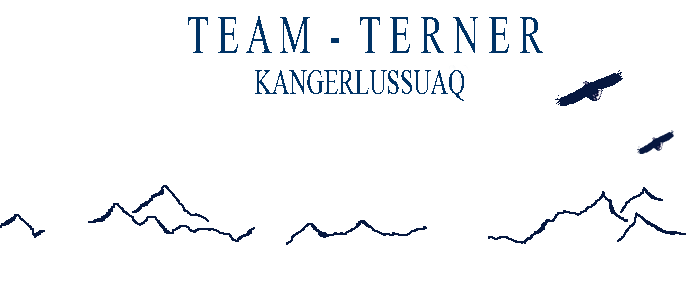
DIARY
GALLERY
WHALES & TAILES
Team Terner
A travel description from a fantastic trip to Greenland in the winter.
Greenland (Greenlandic: Kalaallit Nunaat), is the world’s largest island, located between the Arctic and Atlantic oceans.
Three-quarters of Greenland is covered by the only permanent ice sheet outside of Antarctica.
Greenland has been inhabited at intervals over at least the last 4,500 years by Arctic people.
Norsemen settled the uninhabited southern part of Greenland beginning in the 10th century.
Inuit peoples arrived in the 13th century.
With a population of 56,081 (2020), it is the least densely populated region in the world.
Nowadays, the population is concentrated mainly on the southwest coast, while the rest of the island is sparsely populated.
Diary
 Already as children we took every opportunity to imagine life in Greenland, including snowball fights, eating chocolate to get energy and looking out for polar bears.
Already as children we took every opportunity to imagine life in Greenland, including snowball fights, eating chocolate to get energy and looking out for polar bears.
We never had a dog so we had to drag the sledges ourselves.
As for polar bears we got ours recently.

One day we found Greenland on a globe, not exactly where we thought it was, but at least now we knew which way to travel.

We set out to find out as much as possible about Greenland, going to the Travel Agency to buy our tickets, visiting the National Museum and the library.
We were very serious about shopping for the outfits we needed in Greenland
We did not have to rob a bank to go there – but at least the Balaclavas would help keep us warm.
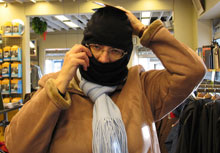
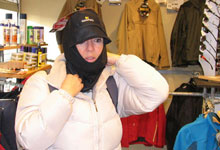
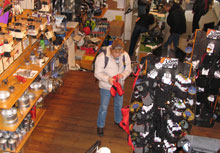
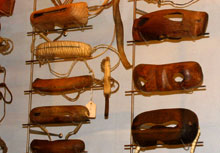
As we would be there in the winter and the weather forecast said -42 C, we knew we needed a lot of warm clothes, and plenty of chocolate, and a great deal of humour .

Sproget ville vi også lære, men det er smadder nemt bare man kender1:ataaseq
|
||
Godmorgataaseq Ulla,
Det er lidt ærgeligt, mataaseq dataaseq er sværere at finde ord, man kan bruge marluk og pingasut i.
|
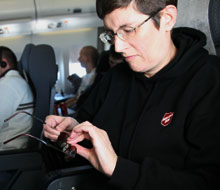
Being very organized we covered the metal parts of our glasses with tape to prevent them freezing to the skin.
Maybe that was not really necessary as no one else seemed to have problems with their glasses, or looked as stupid as we did.
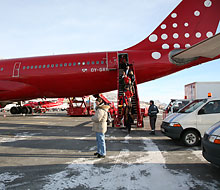
Nothing could stop us now ….
and we were the first to get of the plane in Kangerlussuaq Friday morning.
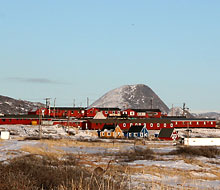
After unpacking we put on all our clothes and went on a sightseeing trip around the town and in the area.
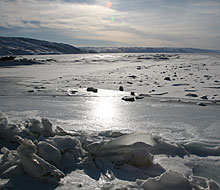
Including a visit to the harbour, the area round Kelly Ville, a tour of the former American Base “Bluie West 8”.
Kangerlussuaq area is home to Greenland’s most diverse terrestrial fauna, including muskoxen, caribou, and gyrfalcons.
The settlement’s economy and population is almost entirely reliant on the airport and tourist industry.
The airport dates from American settlement during and after World War II, when the site was known as Bluie West-8 and then Sondrestrom Air Base.
Kangerlussuaq is a rather small town with the airport right at the centre, and a few other buildings, including a pizzeria serving musk ox–pizza, though we never got round to tasting that
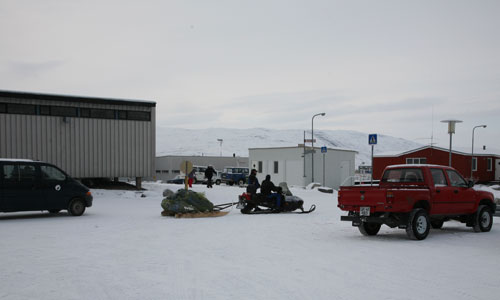
Some 550 people live there, and they have all kind of vehicles, all of them made to drive in the extreme cold climate on ice- and snow covered roads.
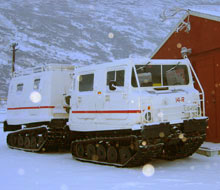
Russian bus without missiles
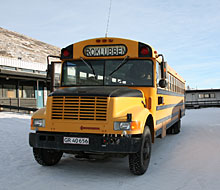
Food Bus
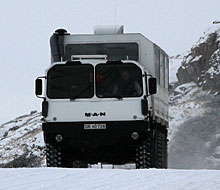
The ultimate bus
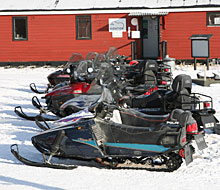
Belt-rigs haws
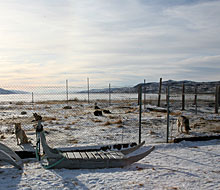
Garage for sledge-taxies
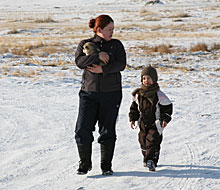
Puppy power
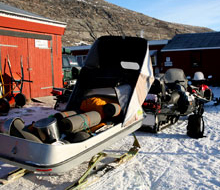
Snow-scooter cabriolet
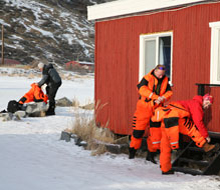
Orange not being our color we
decided not to join the snow-
scooters going to camp out
in the open for a couple of days
The northern lights are a fascinating phenomenon caused by collisions between the sun’s electrically charged particles and molecules and atoms in the Earth’s atmosphere.
The spectacular show takes place in the upper atmosphere at a height of approximately 100 kilometres and can best be compared to candles flickering in the wind at night.
A well-known legend relates that when the northern lights dance in the night sky,it means that the dead are playing football with a walrus skull.
Today certain tribes think that children will be particularly intelligent if they are born in the magical glow of the northern lights
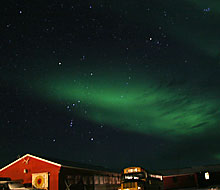
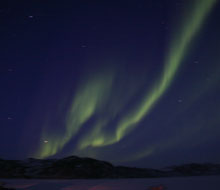
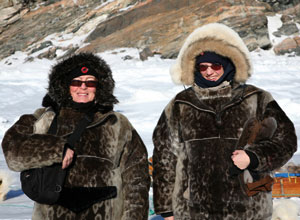
Saturday was dog sleighing day. We got dressed for the occasion, which meant putting on an extra layer of sealskin trousers and anorak on top of our own clothes.
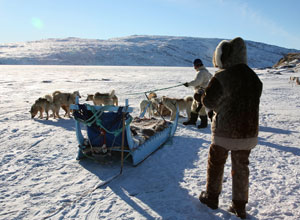
This made moving about very difficult, but since the dogs and the driver were doing all the work, we managed to sit on the sledge.
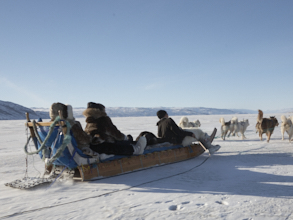
Off we went…………..
Enjoying the sound of the dogs, the frozen ice and the view of the frozen fjord, the blue sky and the strong sun shining down on us. It was a great experience.
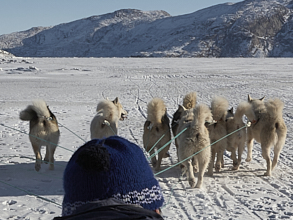
WOW
what a day
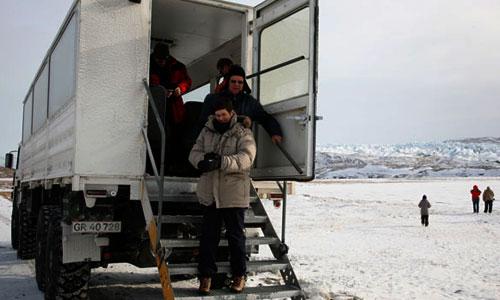
Sunday a specially built off-road truck with chains on all 8 wheels took us to Inland Ice – at point 660. The road was built by the VW-factory which had a test centre out on the ice to test new cars under extreme conditions, far away from reporters and photographers.
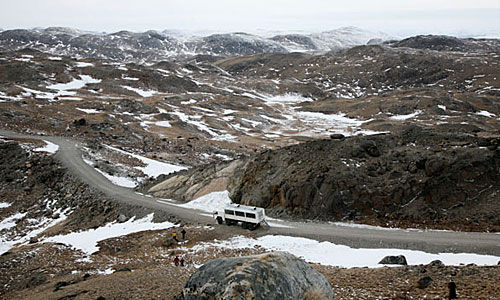
The road went 40 km through the beautiful breathtaking landscape.
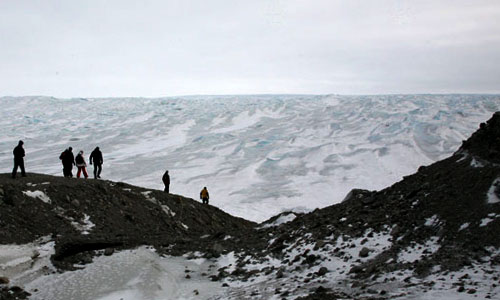
There we were on the edge of the enormous ice desert and starting to actually walk to the icecap.
The ice cap – up to three kilometers thick – covers an area 14 times the size of England.
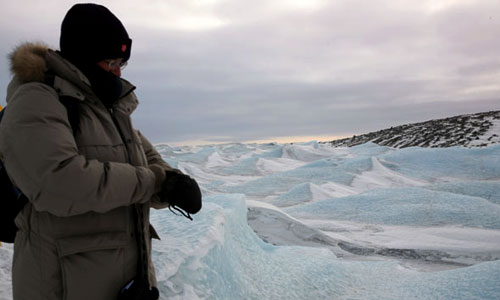
The ice cap took us by surprise, we thought is would just be ice and it was,
but what beautiful ice it was, absolutely huge, extremely quiet, very colourful
and also rather slippery.
YES – WE MADE IT
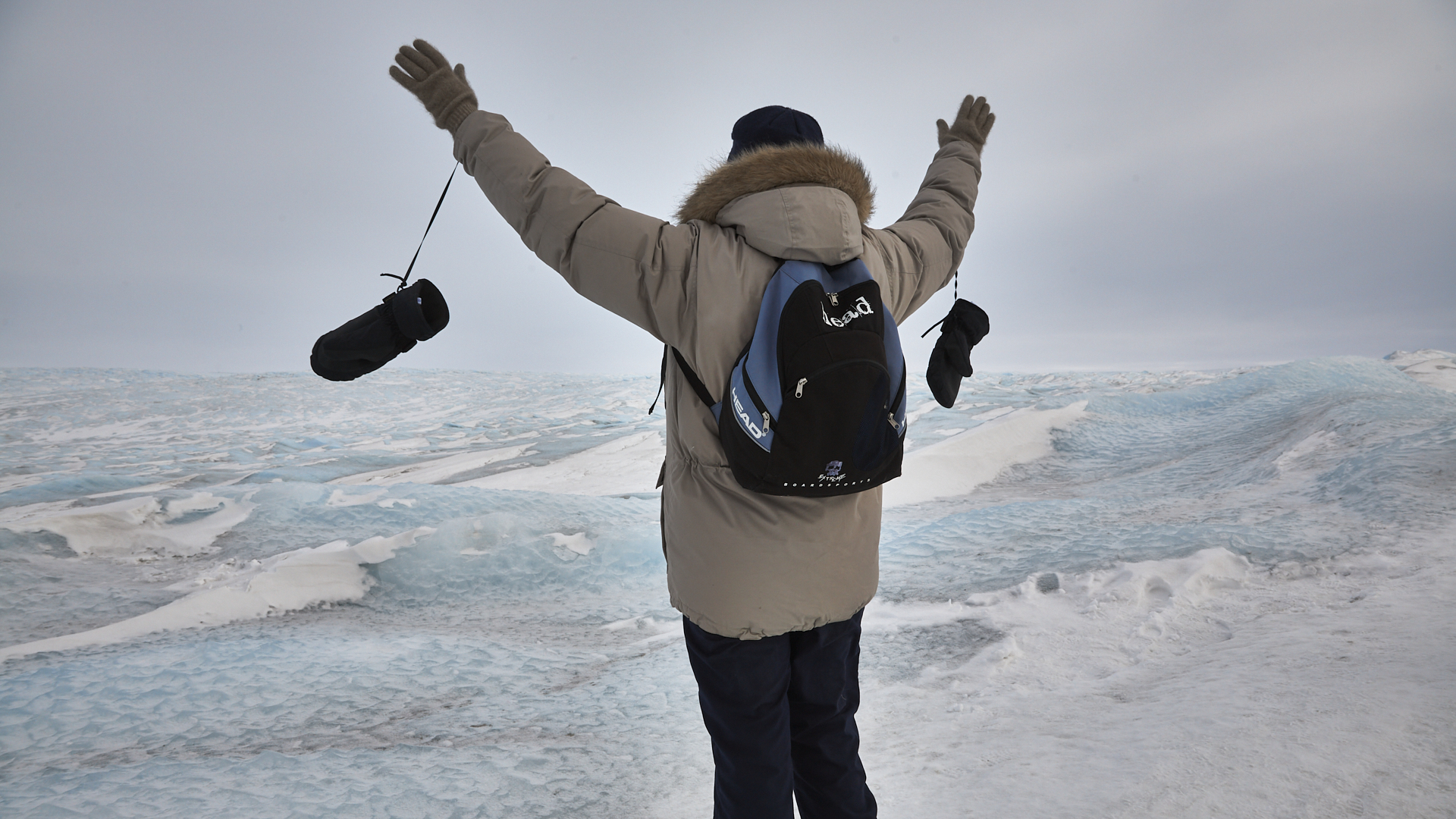
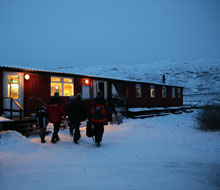
Every night we drove out to restaurant Roklubben at Lake Ferguson, the lake that supplies Kangerlussuaq with fresh water.
They serve excellent food and Sunday they made a huge buffet with all kind of dishes using local produce from Greenland; we had the chance to taste many different kinds of fish, shellfish, seal, reindeer, whales and musk ox. Most of it tasted very good – and at least we tried it all.
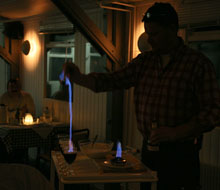
They showed how to make Greenland coffee with whipped cream and different kinds of alcohol, set to fire to simulate the northern lights
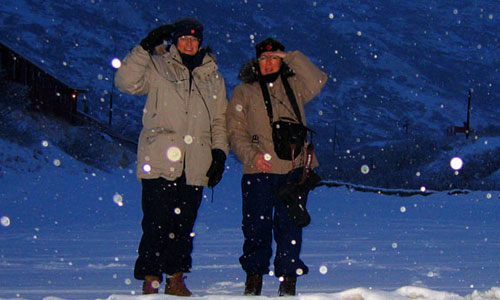
Early on Monday it started to snow, and we hurried out to experience the snowflakes, the special light and the sound of the dogs howling. We completely forgot all about our alarm clock but when we returned much later all the others residents in the hostel had heard it, which was very embarrassing.
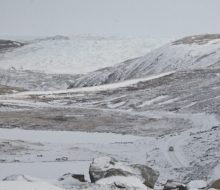
Later on Monday we went on Safari.
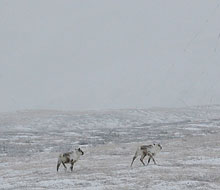
We were lucky to see reindeers, huge ravens and musk oxen.
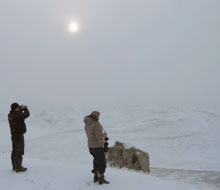
The day was very grey and foggy and the landscape seemed so surreal.
A group of 6 musk oxen feeding on grey leaf willow shrubs. More than 3,000 musk oxen live in the area around Kangerlussuaq but as the annually hunt had just finished most of them had wisely left the area.
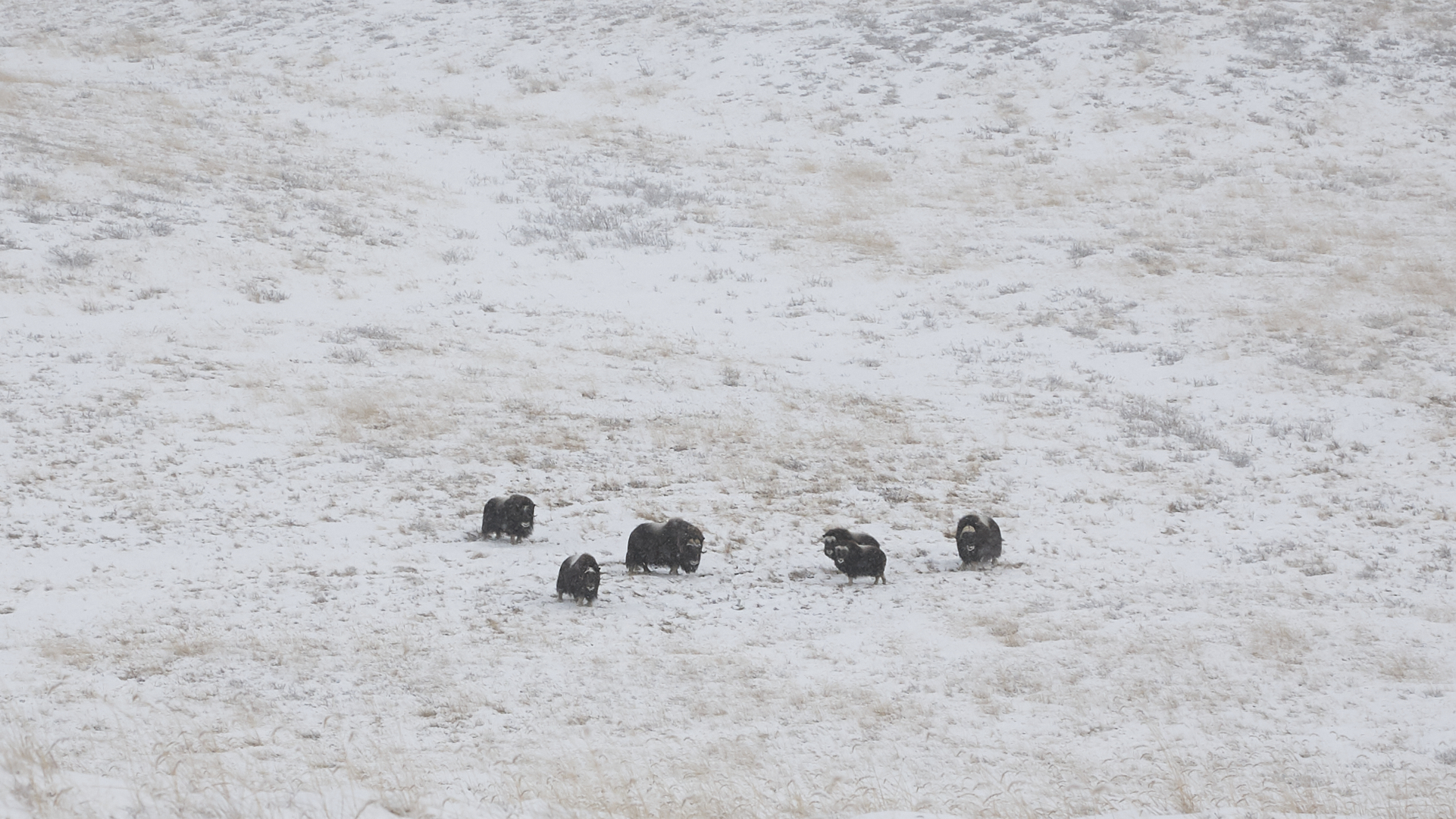
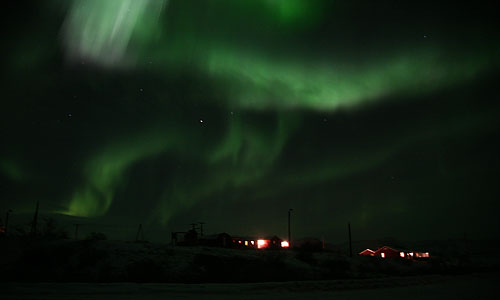
On the last night we were luckily to get to see the northern lights again, a great way to say good bye.
We had a great time and an unforgettable experience in this fantastic place. It has an impressive landscape with the ice and snow and the light creating a beauty like nowhere else.
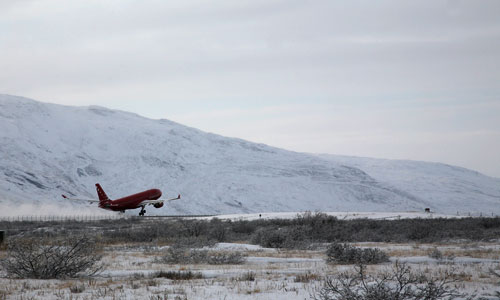
We experienced so much, and yet we were only there for just over four days.
Here we are on the plane going back home.
Bye from Team Terner
GALLERY
Whales & Tailes
If you want to learn about different species of whales in Greenlandic waters,
Klik the + to read about them
The Narwhal / Narhval / Monodon monoceros

Length: 4 – 5 meter , Weight 0,8 – 1,6 tons
NarWhal feed on small shrimp-like creatures called krill , fish , squid , shrimp, and other marine animals.
Narwhals are a very vocal species of whale, making clicks, squeals, and whistles to communicate and/or navigate.
Narwhals are deep divers. During a typical deep dive the animal will descend at 2 m/s for eight to ten minutes, reaching a depth of up to 1000 m, spend perhaps a couple of minutes at depth before returning to the surface.
The deepest recorded is 1164 m. Typical dive times are 20 minutes, with 25 minutes recorded in exceptional cases.
Killer Whale / Spækhugger / Orcinus orca

Length: 4 -10 meter , Weight: between 7 – 10 tons
Killer Whale feed on fish, squid, birds, and marine mammals.
They often work together to catch a meal. They sometimes will force many fish into one area and take turns feeding or will beach (slide out of the water onto the shore) themselves to scare seals or penguins into the water where other whales are waiting to feed.
Killerwhales live 30 to 50 years in the wild and is the largest member of the dolphin family.
Humpback Whale / Pukkelhval / Megaptera novaeangliae
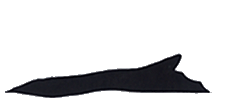 Length: 14 – 18 meter , Weight between 25 -30 tons
Length: 14 – 18 meter , Weight between 25 -30 tons
Feed on krill (shrimp-like crustaceans) and small fish such as herring and mackerel. Consumes between 2,000 and 9,000 pounds of fish and krill a day.
The humpback whale is capable of living up to 95 years.
Humpbacks sometimes engage in social hunting in which several whales encircle a school (group) of fish and blow bubbles that form a ‘net’ around the fish, then move in with their mouths open to devour their prey.

Fin whale / Finhval / Balaenopters physalus

Length: 17 – 24 meter , Weight: between 50 – 70 tons
Fin Whales feed on small shrimp-like creatures called krill and fish and they can consume up to 2 tons of food a day.
Among the fastest of the great whales, it is capable of bursts of speed of up to 37 km/hr leading to its description as the “greyhound of the sea.
It dives to depths of up to 250 meters (820 ft), each dive lasting between 10 and 15 minutes.
Fin Whales have been known to leap completely out of the water.













